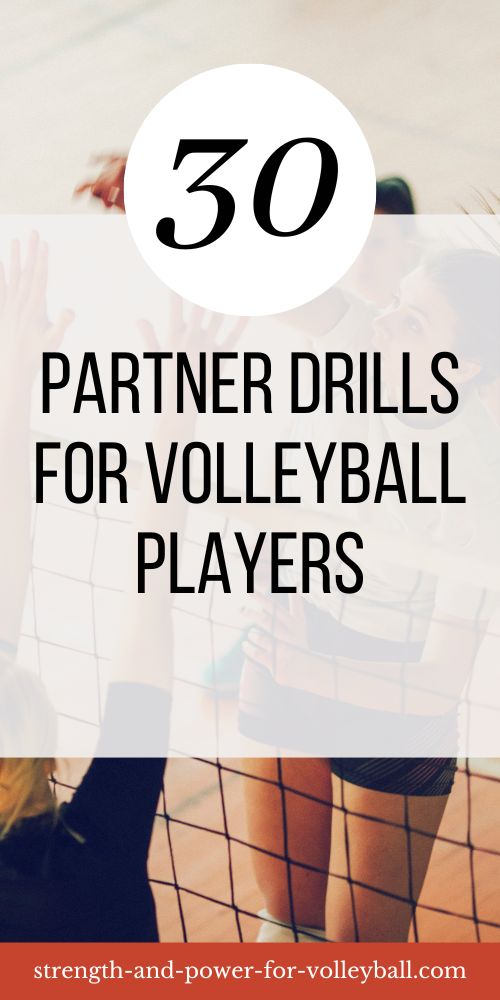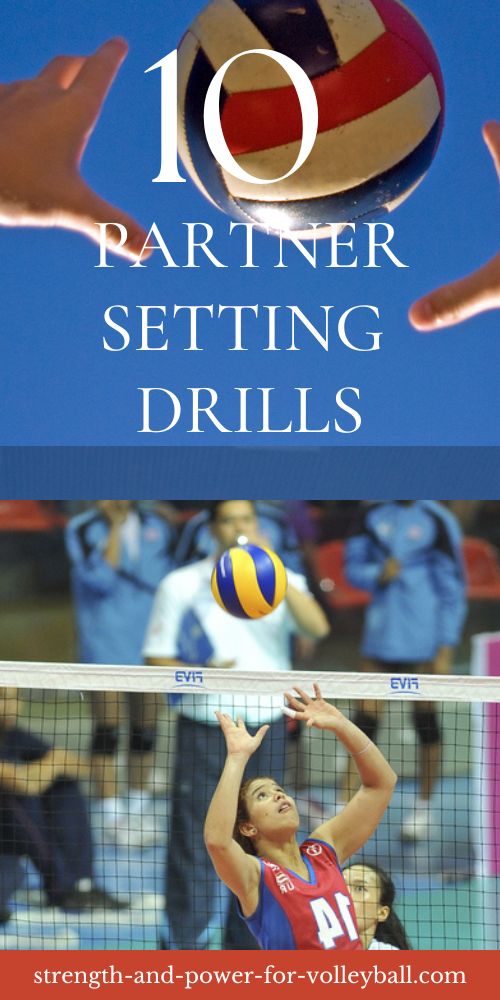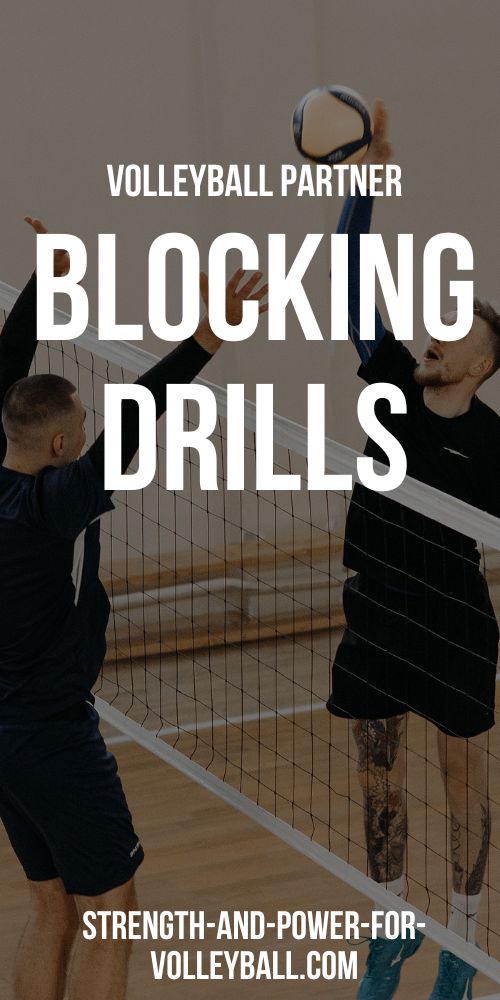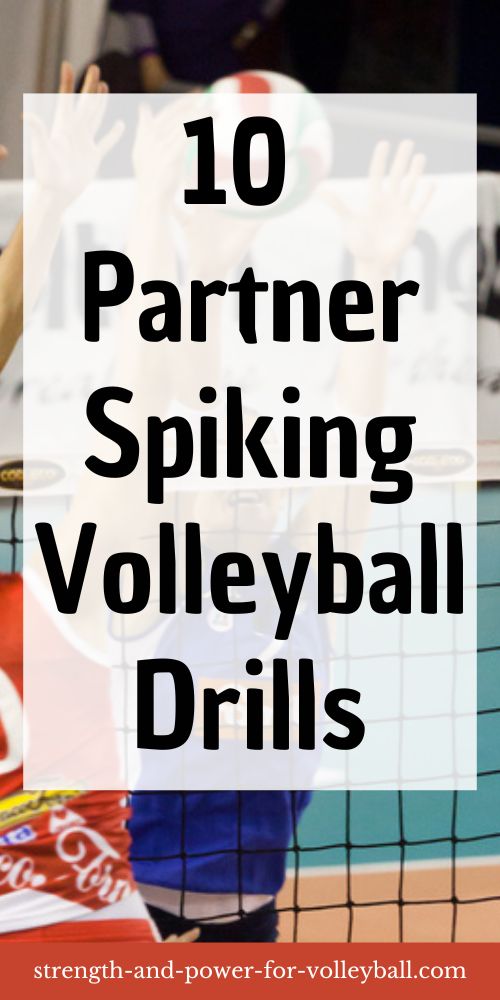Volleyball Drills with a Partner
Performing volleyball drills with a partner has several advantages.
Increased repetition: When practicing with a partner, players can perform drills with more repetitions, which can help improve muscle memory and skill acquisition.
Realistic game-like situations: Practicing with a partner allows players to simulate game-like conditions, such as passing and setting to a moving target.
Immediate feedback: A partner can provide immediate feedback on technique, allowing players to correct mistakes in real-time.
Motivation: Training with a partner can provide encouragement and a sense of accountability, pushing each other to improve.
Improved communication: Practicing with a partner helps improve communication and teamwork, as players must work together to achieve their goals.
Specific skill development: Working with a partner allows players to focus on specific skills, such as serving, passing, setting, hitting, blocking, or digging, with targeted drills.
Flexibility: Practicing with a partner can be done anywhere, whether on a beach, in a gym, or in a backyard.
Overall, training with a partner can be an effective and fun way to improve volleyball skills, develop teamwork, and enhance performance on the court.
30 Volleyball Drills with a Partner
Here are 30 volleyball drills that you can do with a partner.
Pepper: This drill involves passing the ball back and forth to each other with a bump, set, and spike.
Serve and pass: One partner serves the ball to the other, who then passes it back.
Pass and set: One partner passes the ball to the other, who then sets it back.
Block and spike: One partner blocks the other's spike, and then the roles are switched.
Dig and set: One partner digs the ball, and the other sets it back.
Partner pepper: This drill is similar to regular pepper, but both partners are allowed to use any of the three hits (bump, set, spike).
Cross-court passing: One partner passes the ball diagonally across the court to the other, who then passes it back.
One-handed pepper: This drill involves using only one hand to pass and set the ball back and forth.
Two-on-two: This drill involves playing a game of two-on-two with one partner serving and the other receiving.
Hitting lines: One partner hits the ball while the other shags and returns the ball.
Defense: One partner hits the ball, and the other partner practices their defensive moves.
Block and cover: One partner blocks the other's spike, and then both partners scramble to cover the court.
Pepper with blocking: This drill involves adding blocking to the regular pepper drill.
Four-corner passing: One partner stands in each corner of the court and passes the ball back and forth.
Dig and roll: One partner digs the ball, and the other partner rolls the ball back.
Serve receive: One partner serves the ball, and the other partner receives it.
Serve and attack: One partner serves the ball, and the other partner attacks it.
Pepper with a target: This drill involves hitting a specific target on the court while playing pepper.
Toss and hit: One partner tosses the ball, and the other partner hits it.
Two-touch drill: One partner touches the ball twice before passing it to the other partner.
Hitting and blocking: One partner hits the ball while the other blocks.
Quick sets: One partner sets the ball quickly to the other, who hits it back.
Rainbow drill: This drill involves hitting the ball high in the air and then running to the other side of the court to catch it.
Bounce pass: One partner passes the ball, and the other lets it bounce before passing it back.
Touch and pass: One partner touches the ball before passing it to the other partner.
Spin serve receive: One partner serves the ball with spin, and the other partner receives it.
Short court: This drill involves playing on a smaller court with shorter rallies.
Back-and-forth drill: This drill involves passing the ball back and forth as quickly as possible.
Side-to-side passing: One partner passes the ball side to side, and the other partner passes it back.
Overhand passing: This drill involves passing the ball overhand back and forth between partners.
10 Serving Volleyball Drills with a Partner
Here are 10 volleyball serving drills that you can do with a partner.
Serve and pass: One partner serves the ball to the other, who then passes it back.
Target serving: One partner aims to serve the ball to a specific target on the court while the other partner shags the ball.
Float serve and receive: One partner practices a float serve while the other partner receives it.
Spin serve and receive: One partner practices a spin serve while the other partner receives it.
Serve and sprint: One partner serves the ball, and both partners sprint to a designated spot on the court.
Serving lines: One partner serves from one end of the court while the other partner shags the balls at the other end.
Serve and block: One partner serves the ball while the other partner practices blocking.
Serve and dig: One partner serves the ball while the other partner practices digging.
Serve and hit: One partner serves the ball while the other partner practices hitting.
Serve and switch: One partner serves the ball and switches places after each serve.
10 Setting Volleyball Drills with a Partner
Here are 10 volleyball setting drills that you can do with a partner.
Partner setting: One partner sets the ball to the other, then sets it back.
Wall setting: One partner sets the ball against a wall, and the other partner shags the ball and sets it back.
Blind setting: One partner stands behind a barrier, and the other partner tosses the ball over the barrier for the other partner to set.
Spin setting: One partner practices setting the ball with spin while the other partner shags the ball.
Target setting: One partner sets the ball to a specific target on the court while the other partner shags the ball.
Quick set and hit: One partner quickly sets the ball to the other partner, who then hits it back.
One-handed setting: One partner practices setting the ball with one hand while the other partner shags the ball.
Platform setting: One partner uses their platform (forearms) to set the ball back and forth with the other partner.
Toss and set: One partner tosses the ball to the other partner, who then sets it back.
Two-touch setting: One partner sets the ball using two touches before passing it back to the other partner.
10 Blocking Volleyball Drills with a Partner
Here are 10 volleyball blocking drills that you can do with a partner.
Shadow blocking: One partner practices shadow blocking while the other partner hits the ball over the net.
Quick block and hit: One partner blocks the ball and quickly hits it back to the other partner.
Move and block: One partner moves laterally along the net while the other partner hits the ball over the net, and the blocking partner tries to block the ball.
Double block: Both partners block the ball together and then shag the ball together.
Cross block: One partner blocks the ball diagonally while the other partner hits the ball over the net.
Timing block: One partner hits the ball in different directions, and the other partner practices timing their block to meet the ball.
Block and transition: One partner blocks the ball and then transitions to a defensive position to dig any subsequent hits.
Hit and block: One partner hits the ball to the other, who then blocks it back.
Blind blocking: One partner blocks the ball while the other stands behind a barrier and hits the ball over the barrier.
Random blocking: One partner hits the ball to different locations on the other side of the net, and the blocking partner tries to block the ball.
10 Spiking Volleyball Drills with a Partner
Here are 10 volleyball spiking drills that you can do with a partner:
Spike and block: One partner spikes the ball while the other partner practices blocking.
Cross-court spikes: One partner spikes the ball diagonally to the other side of the court while the other partner shags the ball.
Hit and dig: One partner hits the ball to the other, who then digs it back.
Spike and transition: One partner spikes the ball and then transitions to a defensive position to dig any subsequent hits.
One-handed spikes: One partner practices spiking the ball with one hand while the other partner shags the ball.
Platform spikes: One partner uses their platform (forearms) to spike the ball back and forth with the other partner.
Random spikes: One partner hits the ball to different locations on the other side of the net, and the spiking partner tries to spike the ball.
Spike and pass: One partner spikes the ball to the other, who then passes it back.
Quick hit and block: One partner quickly hits the ball to the other, who then blocks it back.
Two-touch spikes: One partner spikes the ball using two touches before passing it back to the other partner.
If you enjoyed these drills and would like to keep it close to you at any time, just save this pin to your Pinterest Volleyball Training Board.
Your second block of text...



